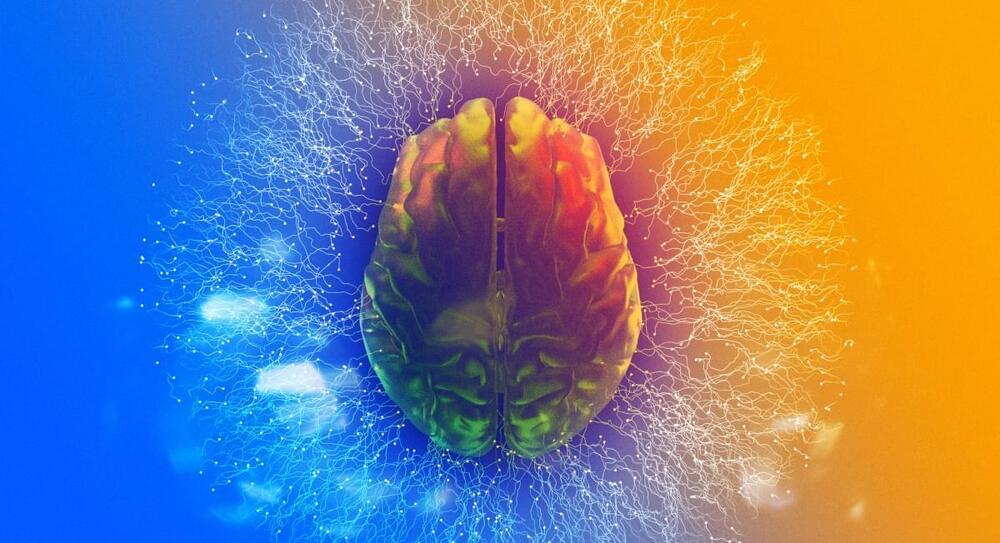The US is more alert to the risks of strep infections, but the UK has better data. It’s not clear which makes more difference in controlling disease.


Foundations of neurotechnologies BCIs.
Share your videos with friends, family, and the world.

A new machine learning model will help scientists identify small molecules, with applications in medicine, drug discovery and environmental chemistry. Developed by researchers at Aalto University and the University of Luxembourg, the model was trained with data from dozens of laboratories to become one of the most accurate tools for identifying small molecules.
Thousands of different small molecules, known as metabolites, transport energy and transmit cellular information throughout the human body. Because they are so small, metabolites are difficult to distinguish from each other in a blood sample analysis—but identifying these molecules is important to understand how exercise, nutrition, alcohol use and metabolic disorders affect well-being.
Metabolites are normally identified by analyzing their mass and retention time with a separation technique called liquid chromatography followed by mass spectrometry. This technique first separates metabolites by running the sample through a column, which results in different flow rates—or retention times—through the measurement device.
Dark matter is an archetype of a missing phenomenon, but there are plenty of potential explanations for it.

Check out all the on-demand sessions from the Intelligent Security Summit here.
Simulation can help engineers overcome these challenges. Rather than tweaking the AI model’s architecture and parameters, it has been shown that time spent improving the training data can often yield more extensive improvements in accuracy.
Winter and rainy season is worst for those who have low immunity. Antibiotics have many side effects. But there high fever due to viral infection is also risky.
A cold is an infection caused by a virus. It’s a common and usually mild illness that affects the nose and throat. Find out more here: http://bit.ly/KV8y1c.
The content is intended for general information only and does not replace the need for personal advice from a qualified health professional.
There are many components that make The Orville: New Horizons a great show, and not the least of which are the beautiful visuals. Please enjoy this compilation of amazing shots from the final four episodes of the third season of The Orville.
Part 1: https://youtu.be/EkuP4rQC-Zc.
#RenewTheOrville.
If you’d like to help support the channel:
https://buymeacoffee.com/JohnDiMarco.
https://www.paypal.me/DarwinDiMarco.
Thank you!
0:00 — Intro/From Unknown Graves.
0:54 — Midnight Blue.
3:25 — Domino.
9:01 — Unknown Future.
11:13 — Conclusion.
Thanks to Jitse Lemmens for my amazing avatar:
Father son duo Jim and Andrew Kazmer build and drive one of the most exciting and best supported robots at NHRL in Project Liftoff.
They’ve further developed this into a second bot in Flip n Cut with a variation in weapon type and have pushed the limits of innovation with their fully autonomous combat robot DeepMelt.
How does a fully autonomous robot work, and how will it assist human drivers in future?
What is a Meltybrain, how does it work?
Why is the choice of wheel so important?
Will we see a 250lb Project Liftoff?
Find out in the episode 4 of This Is Havoc: Liftoff.
NHRL is the biggest and most accessible robot combat league in the world, home of the 3lb, 12lb and 30lb robot combat world championships.
We are one of the toughest places to win, but also one of the most friendly and welcoming for all ages and experience.
The last event of 2022 will take place December 19th: Christmas Special meeting. with our president Prof. Bernard Foing!
We’ll have a look at what we have done in 2022, and we’ll announce the program of 2023.
The Zoom meeting will be open to all of the SRI Members and invited friends – just registered or going to register during the meeting.
All the participants will have the possibility to make questions to the SRI President, the Founder and the Board of Directors, about the 2023 program. Criticisms and proposals will be welcome too.
We have a huge programme for 2023, and we are going through some key steps, to achieve an higher legal status for our association: to be registered as a not for profit entity on the Unic National Register of the Third Sector Entities (RUNTS). Such an achievement will allow SRI to call Italian taxpayers to target the 5×1000 of their yearly tax to SRI, and the donations to be deducted from the tax declaration. These conditions, when achieved, will greatly contribute to the sustainability of our initiatives.
We are asking each of the SRI members and supporters to assume this priority for December 2022: to bring onboard many new members and to seek for donors and sponsors!
We will celebrate together during the Xmas Special event and exchange season greetings and wishes for a vibrant year 2023 for Space Renaissance International!

Until now, some researchers believed Langerhans cell histiocytosis (LCH), a rare and fatal form of cancer in children, is derived from immune cells called dendritic cells, while others believed that they originate from related immune cells called monocytes. A new study showed mutated LCH cells have properties similar to both monocytes and dendritic cells, as well as a relatively new type of dendritic cell called DC3.